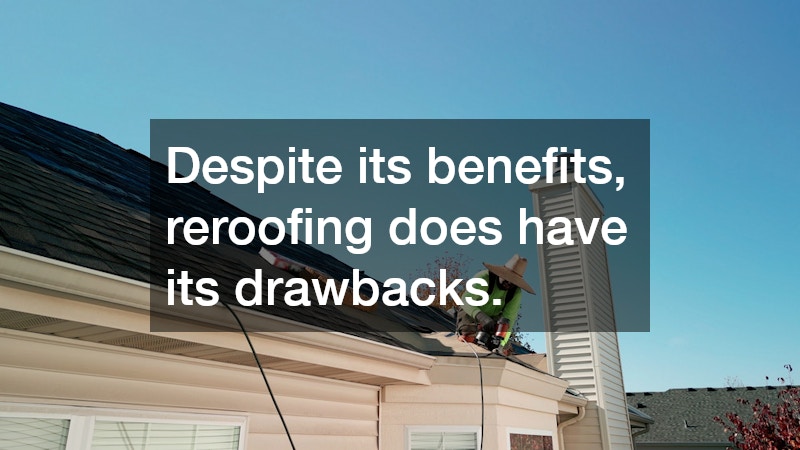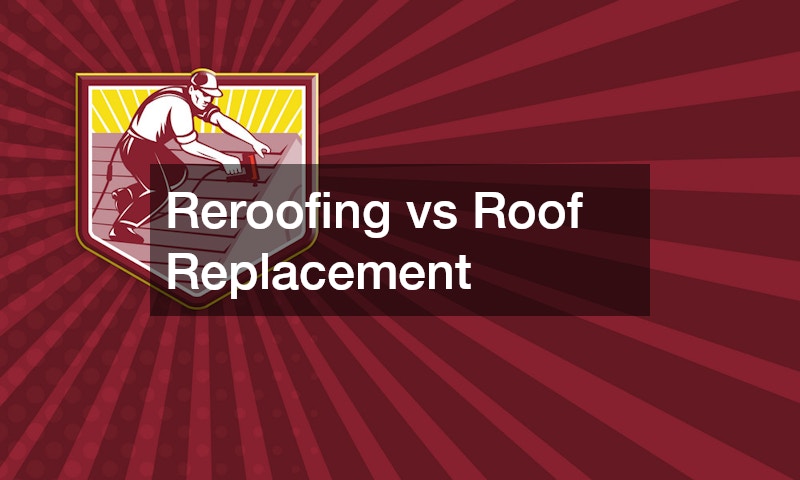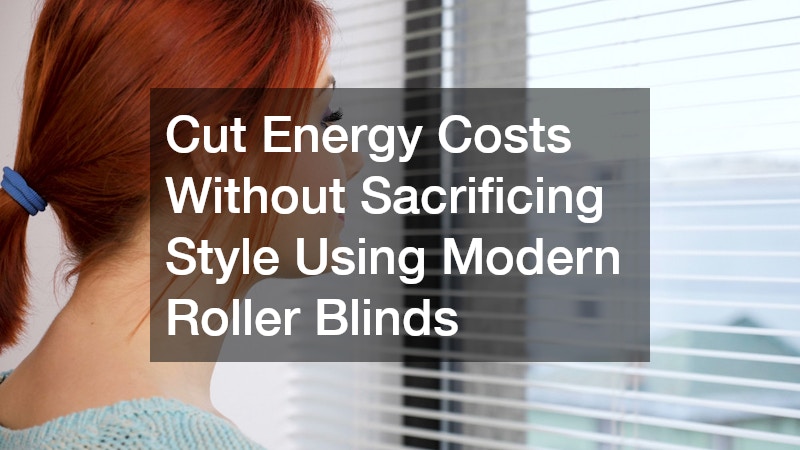When it comes to maintaining the integrity and aesthetic appeal of your home, the roof is one of the most critical components. Homeowners often face the decision between reroofing and roof replacement when their roofs begin to show signs of aging or damage. In this article, we’ll delve into the key differences between these options, their respective benefits, and which might be right for your situation.
Understanding Reroofing
Reroofing is often considered a cost-effective solution for homeowners facing moderate roof wear and tear. This process involves placing a new layer of shingles over the existing roof, effectively giving it a refreshed appearance and improving its ability to protect your home. It is a popular choice for those who want to avoid the higher costs associated with a complete roof replacement. However, it’s important to note that reroofing isn’t suitable for all roofs. Structures that have already had multiple layers of shingles applied may not be eligible for this method due to the added weight and potential structural damage.
One of the primary advantages of reroofing is the shorter time frame required to complete the job. Unlike roof replacement, which entails removing the old roofing material, reroofing can usually be done quickly and with minimal disruption. This can be ideal for homeowners who prefer a swift resolution to their roofing concerns and have a roof that is otherwise stable and free of significant damage. Moreover, since reroofing uses fewer materials and requires less labor, it generally comes at a lower cost, making it an attractive option for budget-conscious homeowners. However, homeowners must weigh these benefits against the limitations of reroofing to make an informed decision.
Despite its benefits, reroofing does have its drawbacks. It is considered a temporary fix rather than a long-term solution and usually lasts around 15 to 20 years under the best conditions. The lifespan of this method largely depends on the materials used and the climate your home resides in; harsher weather conditions may reduce its effectiveness. Additionally, reroofing might not address underlying issues, such as leaks or structural weaknesses, since the old materials remain in place. Therefore, a thorough inspection by a roofing professional is essential to determine whether reroofing is suitable for your home.
Exploring Roof Replacement
Roof replacement is a comprehensive approach to addressing roofing concerns. This process involves tearing off the current roofing materials down to the deck, checking for damage, and then installing new shingles or other roofing products. Roof replacement is typically recommended when the existing roof has extensive damage or wear that renders reroofing impractical. It is particularly beneficial for older homes where the underlying decking has deteriorated and requires reinforcement. Homeowners should be prepared for the associated costs, as roof replacement is more labor-intensive and requires more materials than reroofing.
Investing in a roof replacement offers several long-term benefits. Firstly, it comprehensively resolves any underlying issues by giving contractors access to the underlying structure. This makes it possible to replace damaged decking and ensure that the roof, as a whole, is structurally sound. Furthermore, the new roof is free from defects or wear, providing peace of mind and a longer lifespan compared to a reroof. Advanced materials and modern roofing techniques can further enhance durability and energy efficiency, potentially saving homeowners money on utilities and future repairs. Roof replacement also increases property value by enhancing curb appeal and reassuring future buyers of the home’s condition.
While roof replacement is more costly upfront, it is often the more economical choice in the long run. When reroofing might only extend the life of an existing roof, replacing it entirely provides lasting effectiveness against the elements for up to 50 years. As a significant investment, it is essential to select high-quality materials that suit your home’s style and the regional climate. Engaging a licensed professional with a strong reputation and verifiable references is critical to ensuring that the roof replacement process is completed to standard. The fact remains that a new roof can significantly improve your home’s performance and value, making it a worthy investment for homeowners committed to maintaining their property.
Making the Right Choice for Your Home
When determining whether reroofing or roof replacement is the right option for your home, several factors come into play. Evaluate the current condition of your roof, the extent of any visible damage, and how much longer you plan to stay in your home. If you’re leaning towards a faster, less expensive fix for a roof that is still in reasonably good condition, reroofing might be suitable. However, if your roof requires frequent repairs or has significant issues, a full roof replacement could prove more beneficial. Seek the advice of a qualified roofing contractor who can provide insights based on an inspection and discuss the best options available.
Budget considerations and personal preferences also influence the decision between reroofing and roof replacement. Although reroofing might be the more budget-friendly option initially, the potential need for eventual replacement and the limited insurance coverage may add to the total cost over time. Conversely, though roof replacement requires a more significant upfront investment, it can offer substantial long-term savings by reducing the frequency of repairs and increasing energy efficiency. Furthermore, replacement roofing technologies allow homeowners to choose from a range of materials and features, tailoring the roof to their specific needs and aesthetic preferences.
Ultimately, both reroofing and roof replacement have distinct pros and cons that align with different homeowner goals. Ensuring your family’s safety and the structural integrity of your home should always be the primary concern when considering either option. No matter which path you choose, regularly maintaining and inspecting your roof is key to extending its lifespan and preventing unexpected expenses. Take the time to understand your needs, budget, and the available materials so you can confidently make an informed decision. By investing in either reroofing or roof replacement, you can protect your most valuable asset – your home – for years to come.





